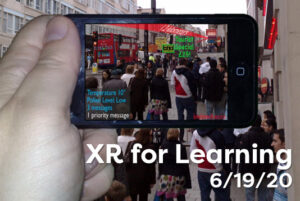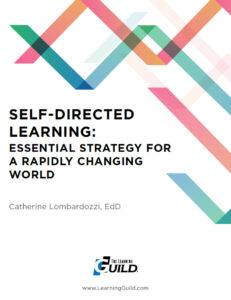XR for Learning – June 19, 2020

Photo via https://bit.ly/37PUg4r
Augmented, Virtual, and other mixed reality technologies are rapidly emerging and advancing, creating new and exciting opportunities for training and education. XR for Learning collects some of the best XR content that learning professionals can learn from.
Here’s this week’s recommended content.
The Missing Step in VR Training: Human Performance Analysis by Bill Brandon
VR Training provides an environment for practice, and the analysis of performance, that is different than just about any other environment. In this post Bill Brandon interviews Derek Belch to examine the role virtual reality and other mixed reality platforms will play in bringing people back to work.
Boeing Is Using Varjo Headsets To Train Astronauts For Its Starliner Spacecraft by David Heaney
One of virtual reality’s key use cases is the ability to provide an environment for safe practice for tasks that are either too expensive or too risky to practice in the real world. This post by David Heaney looks at an example that lives at the intersection of those two risks – preparing astronauts, and potentially tourists, for space travel.
How Augmented Reality Is Used in Teaching Anatomy by Gergana Mileva
Augmented reality is a tool that can truly transform how we educate and train. This post by Gergana Mileva examines one educational use case – the teaching of anatomy – and how AR can be used to deepen the learning experience.
HTC Announces ‘Vive XR Suite’ a Bundle of VR Apps for Remote Productivity by Ben Lang
The disruptions caused by COVID-19 are forever changing how companies look at how we work. Virtual reality is increasingly being looked at in this context as a way of supporting the future of work. This post by Ben Lang looks at a new bundle of applications from HTC that are specifically tailored to enabling learning and collaboration via VR.
Osso VR To Bring Film-Quality Detail To Its VR Surgical Training Platform by Peter Graham
The medical field is one of the early adopters of VR for training. This post by Peter Graham examines one use case, and how the virtual reality training environment enhances the competency-building of surgeons and other workers in the medical field.
New Research Report on Self-Directed Learning
According to a 2017 Towards Maturity study, only a quarter of L&D leaders feel they have been successful in supporting self-directed learning.
The latest Guild Research report by Catherine Lombardozzi offers information that may be helpful for promoting and benefiting from self-directed learning in L&D. It dissects three principal dynamics of self-directed learning: the process, the required capabilities, and the necessary environmental supports. It also extrapolates what makes for a healthy environment for self-directed learning.
Guild research reports are available as part of your FREE Guild Membership. Log in and download this new report today!


Leave a Reply